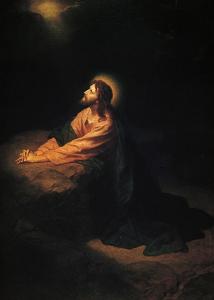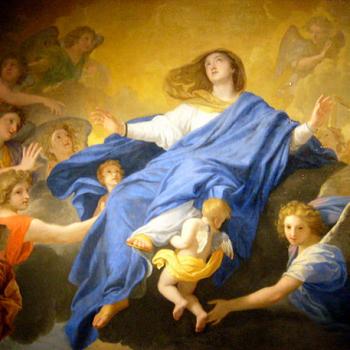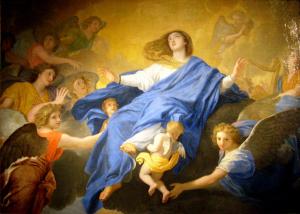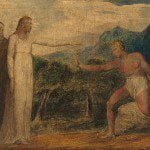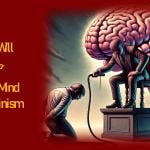I will be resolving all of the alleged “contradictions” from the web page entitled “194 CONTRADICTIONS, New Testament.” It’s perpetually striking to observe how many of these are obviously not logical contradictions, and how very easy they are to refute (many being patently and evidently absurd). A few here and there do seem to be genuinely perplexing (at first glance) and require at least some thought and study and serious examination (they save my patience). But all are ultimately able to be (in my humble opinion) decisively resolved. Readers can decide whether I succeed in my task or not, in any given case. My biblical citations are from RSV. The words from the web page above will be in blue.
See further installments:
Refutation of 194 Biblical “Contradictions” (#1-25) [4-5-22]
Refutation of 194 Biblical “Contradictions” (#26-50) [4-6-22]
Refutation of 194 Biblical “Contradictions” (#51-75) [4-7-22]
Refutation of 194 Biblical “Contradictions” (#76-100) [4-8-22]
Refutation of 194 Biblical “Contradictions” (#126-150) [4-9-22]
Refutation of 194 Biblical “Contradictions” (#151-175) [4-11-22]
Refutation of 194 Biblical “Contradictions” (#176-194) [4-11-22]
*****
101) One doubted. Jn.20:24.
Some doubted. Mt.28:17.
All doubted. Mk.16:11; Lk.24:11,14.
That’s “Doubting Thomas” in John, and he believed after Jesus appeared to him (20:28). In Mark, the disciples didn’t believe Mary Magdalene’s report of the risen Jesus at first, but later did believe (16:20). Matthew doesn’t specify later belief of the doubters, but doesn’t deny it (argument from silence). We know from the Gospels and early Church history that all the disciples (save Judas) were enthusiastic believers and evangelists, and all but John died martyr’s deaths.
In Luke, the two disciples on the road to Emmaus later believed (24:32-35), and so did the rest of the disciples (24:52). What is the point of this “objection”? So some folks momentarily doubted . . . so what?! People often doubt things and come around later. People can waver, too, between faith and doubt, or have a perpetually weak faith, or fall away from the faith altogether. The accounts reflect this, with regard to a miracle that most of us would find hard to accept at first. It perfectly reflects human nature and how people usually react. This is supposed to be a demonstration of logical contradictions in the Bible and there are none here.
I definitely need supernatural grace to endure the inanities of the final 93 supposed “contradictions.” But I will do it!
102) Jesus said that his blood was shed for many. Mk.14:24.
Jesus said his blood was shed for his disciples. Lu.22:20.
The disciples were a sub-group of the “many.” Duh! If taxes were lowered for the entire middle class, then my family would have our taxes lowered, too!
103) Simon of Cyrene was forced to bear the cross of Jesus. Mt.27:32; Mk.15:21; Lu.23:26.
Jesus bore his own cross. Jn.19:16,17.
Jesus obviously carried His cross in all accounts. It was part of the Roman punishment. John simply didn’t mention Simon of Syrene, and never stated, “and no one else bore His cross . . .”. For the tenth time: arguments from silence are not “contradictions” and they don’t prove anything, one way or the other.
104) Jesus was offered vinegar and gall to drink. Mt.27:34.
Jesus was offered vinegar to drink. Jn.19:29,30.
Jesus was offered wine and myrrh to drink. Mk.15:23.
The Domain for Truth website offers a characteristically thorough and devastating rebuttal:
- Just a quick observation: What the skeptics call “vinegar” the NASB calls “sour wine.”
- The skeptic tries to pit Mark 15:23 on the one hand against Mark 15:36 and Luke 23:36 on the other hand. According to the skeptic Mark 15:23 teaches that the Roman soldiers gave wine and myrrh for Jesus to drink while both Mark 15:36 and Luke 23:36 teaches that the Roman soldiers gave Jesus vinegar/sour wine to drink. Yet the two are not contradictory because these two sets of passages occurred at separate time[s].
- Notice for Mark 15:23 wine and myrrh was offered before Jesus was crucified. How do we know that?
- Jesus being crucified is stated in the next verse in Mark 15:24a.
- Notice the offering of wine and myrrh occurred right when they got to the place of the crucifixion as the verse before mentioned (Mark 15:22).
- Jesus being offered wine and myrrh is also before the soldiers divided Jesus’ garments in Mark 15:24b, suggesting the offer of wine and myrrh was early on.
- Why would they offer wine and myrrh? It was a way to make the pain less painful. Yet Jesus did not take it.
- As a contrast Mark 15:36 and Luke 23:36 recorded chronologically near the end of how before Jesus died the Roman soldiers offered vinegar/sour wine to Jesus. How do we know that?
- Luke 23:36 parallel Mark 15:36.
- Mark 15:36 which mentioned Jesus being offered vinegar/sour wine is obviously 13 verses after Mark 15:23. So after Jesus was first offered with wine they offered Him vinegar/sour wine.
- Note also Jesus died in the next verse from crucifixion in Mark 15:37.
- Why would they offer Jesus vinegar/sour wine instead of wine and myrrh towards the end? Very likely the better wine ran out. Don’t forget there were two other men being crucified next to Jesus that day and there’s also the possibility that the Roman soldiers themselves helped themselves to drink the wine. This observation fit with the biblical timeline.
- The two different offer[s] by Roman soldiers to Jesus of something to drink along with the order of first the wine and then the vinegar/sour wine is also confirmed in Matthew 27 (see Matthew 27:33-34 and Matthew 27:48).
- Thus it is not a contradiction with Jesus being offered on the one hand wine mixed with myrrh while also being offered vinegar/sour wine on the other hand, since these different offering[s] from the Roman soldiers occurred [at] during different time[s]. . . .
- Notice for Mark 15:23 wine and myrrh was offered before Jesus was crucified. How do we know that?
3. The skeptic rightly noted Matthew 27:34 teaches that the Roman soldiers offered vinegar and gall. That is what the text says. However this added detail of “gall” does not contradict with the passages that mentioned Jesus was offered vinegar. None of those passages said the Roman soldiers offered Jesus only vinegar, with nothing else added.
4. As a side note it is important to note that the Greek word for “gall” doesn’t necessarily have to refer to literal liquid from the liver; it can refer to anything that is bitter and the meaning of bitter can be seen in Acts 8:23 and the verbal form in John 7:23. Matthew 27:34 indicates that Jesus fulfilled the Messianic prophecy in Psalm 69:21 with what the Roman soldiers offered to Jesus: “They also gave me gall for my food And for my thirst they gave me vinegar to drink.“ (“Bible Contradiction? What did the soldiers give Jesus to drink?”, 8-7-19; the numbers are 3-4, 6-7 in the original)
105. Jesus refused the drink offered him. Mk.15:23.
Jesus tasted the drink offered and then refused. Mt.27:34.
Jesus accepted the drink offered him. Jn.19:30.
In Mark and Matthew, this was before Jesus was crucified, as indicated by the preceding and following verses in both cases. In John 19:30, it occurred while He was on the cross, just before He died. Since this is two different times, it isn’t a contradiction. One justifiably wonders what the skeptic was drinking when he/she came up with this silly one.
106. Both “thieves” mocked Jesus on the cross. Mt. 27:44; Mk.15:32.
One “thief” sided with Jesus on the cross. Lu.23:39-41.
It could have been that the two reviled Him initially, and in the course of doing that, one of them thought the other was too harsh on Jesus, and reconsidered and started defending Him (and/or what Jesus may have said — unrecorded — persuaded him otherwise). Such a thing not infrequently happens in arguments and debates. Human beings can change their minds. Matthew and Mark don’t say they reviled Him “the entire time” or never ceased doing so, etc. So the possibility for change of heart and mind exists, and seems to be a perfectly plausible explanation.
107) Joseph of Arimathaea boldly asked for the body of Jesus. Mk.15:43.
Joseph of Arimathaea secretly asked for the body of Jesus. Jn.19:38.
The two attributes aren’t mutually exclusive. One can be both bold and operating in secret. Every special forces raid is of such a nature, as is every clandestine espionage assignment. It was “bold” to ask Pilate (not the nicest guy) this, whether it was in secret or not.
108) Jesus was laid in a nearby tomb. Mk.15:46; Lu.23:53; Jn.19:41.
Jesus was laid in Joseph’s new tomb. Mt.27:59,60.
Again, these things aren’t mutually exclusive. Matthew merely adds the information that it was Joseph’s own planned tomb. Someone not saying something doesn’t contradict another saying something. If these logic-challenged skeptics would ever grasp this elementary logical principle and fallacy, half of their objections would instantaneously vanish. But let them keep doing it and making themselves look silly and foolish. That is to the Christian’s (and Bible’s) advantage and the skeptic’s / atheist’s disadvantage, in a “PR” and “strength of argument” sense.
109) A great stone was rolled in front of the tomb. Mt.27:60; Mk.15:46.
There was nothing in front of the tomb. Lu.23:55; Jn.19:41.
There was no stone yet in Luke 23:55 because this referred to the time when Jesus was placed in the tomb (see 23:53-54). When women went back two days later, they found the stone rolled away (24:1-2). John 19:41 simply doesn’t mention the stone, but in John 20:1 we learn that there was one, which was rolled away. Therefore all four Gospels — taken together — note that the tomb had a stone in front of it, which was rolled away. No contradiction; rather, it is complete harmony. 0 for 109 . . .
110) Nicodemus prepared the body with spices. Jn.19:39,40.
Failing to notice this, the women bought spices to prepare the body later. Mk. 16:1; Lu.23:55,56.
What happened is explained right in the challenge! The women likely didn’t see that Jesus’ body was prepared with spices, and the Sabbath was quickly approaching (Jn 19:42) — where this work would be disallowed –, so that they probably concluded that there hadn’t been enough time for such preparation. The women saw that Jesus was laid out with a linen shroud (Lk 23:53-55), but wouldn’t necessarily know if He had been anointed with spices. Therefore, they prepared the spices and ointments (23:56) and returned after the Sabbath to apply them (24:1).
111) The body was anointed. Jn.19:39,40.
The body was not anointed. Mk.15:46 to 16:1; Lk.23:55 to 24:1.
Mark and Luke don’t deny that Jesus’ body was anointed. If they don’t, there is no necessary contradiction. I submit that the women simply weren’t aware that at least some spices had been applied (as indicated in John 19:39-40). In any event, no contradiction has been proven.
112) The women bought materials before the sabbath. Lu.23:56.
The women bought materials after the sabbath. Mk.16:1.
Luke 23:56 doesn’t assert this. It says they “returned [back home], and prepared spices and ointments.” Then they brought them on Sunday (Lk 24:1; Mk 16:1). At this point (after 112 examples), with such absolutely lousy, clueless alleged “contradictions” like this sterling example, one wonders whether the skeptic even reads the passages that he/she lists. Certainly even a basic understanding of what they mean is absent in the majority of cases: in the zealous rush to find a “gotcha!” contradiction to embarrass Christians with. The embarrassment is (or should be) all on their end.
113) Jesus was first seen by Cephas, then the twelve. 1 Cor.15:5.
Jesus was first seen by the two Marys. Mt.28:1,8,9.
Jesus was first seen by Mary Magdalene. Mk.16:9; Jn.20:1,14,15.
Jesus was first seen by Cleopas and others. Lu.24:17,18.
Jesus was first seen by the disciples. Acts 10:40,41.
1 Corinthians doesn’t say that he “first” appeared to Cephas (Peter). Peter is singled out as a witness not because he was the absolutely first person to see the risen Jesus, but rather, because he was the leader of the disciples and the early church (see the first half of the book of Acts).
Mark 16:9 actually does say that Mary Magdalene was the “first.” And so she was. John’s account is consistent with that notion. Does Matthew contradict this because of the second Mary? Not necessarily. Many scenarios can be easily imagined that instantly harmonize the passages. For example, maybe “the other Mary” happened to be looking away when the risen Jesus suddenly “met them”, so that Mary Magdalene was, technically, the first to see Him. Or Jesus met Mary Magdalene with no other women around, and then Matthew 28:9 records a second instance of His appearing to her, except with another woman, too.
Luke 24 has the story of the two men on the road to Emmaus. Nothing definitely indicates they were the first; indeed, they could not have been because various Gospels record Mary Magdalene and the other Mary seeing Jesus early in the morning on the first Easter Sunday, whereas in this account it is said that the time was “toward evening” with the day being “far spent” (24:29).
Acts says that the disciples were in the select group to whom Jesus appeared, as opposed to “all the people.” But it doesn’t say they were absolutely the first, and doesn’t therefore rule out Mary Magdalene being the first person, which is expressly stated in Mark. Conclusion?: all of these passages are perfectly harmonious and pose no problem for biblical infallibility.
114) The two Marys went to the tomb. Mt.28:1.
The two Marys and Salome went to the tomb. Mk.16:1.
Several women went to the tomb. Lu.24:10.
Only Mary Magdalene went to the tomb. Jn.20:1.
So Matthew didn’t mention Salome. So what? That’s of no relevance. In light of Luke, we can conclude that several women (more than the two Marys) saw the empty tomb (though not necessarily the risen Jesus). Mary Magdalene could have told these other women about the tomb and also the fact that she had seen the risen Jesus. This implies repeated trips to witness the empty tomb, which was easy because it was right outside of town.
As for John, this may have been an earlier, initial visit by Mary Magdalene alone: perhaps indicated by “while it was still dark.” Then she went again with others. The text never states that “only Mary” went to the tomb, or that “Mary alone and no other woman” did so. Those are the sorts of words that would be required for an actual contradiction to be present. As it is, no contradiction has been established: not even to the slightest degree. The text simply records an instance with Mary Magdalene alone, without denying that other women saw the risen Jesus, too.
115) It was dawn when Mary went to the tomb. Mt.28:1; Mk.16:2.
It was dark when Mary went to the tomb. Jn.20:1.
Exactly! This confirms my hypothesis that Mary Magdalene made an earlier pre-dawn visit (see #114). Is there any law against that? No. Is it inconceivable? No. Is it possible? Yes. The skeptic acts as if no one could have possibly visited Jesus’ tomb (where the greatest miracle in history had just occurred) more than once.
116) An angel sat on the stone at the door of the tomb. Mt.28:2.
A man was sitting inside the tomb. Mk.16:5.
There could have simply been two angels. Or Matthew was referring to the time when the stone was actually rolled away, per my reasoning in my paper, Resurrection #14: When Was the Stone Rolled Away? [4-27-21].
117) Two men were standing inside the tomb. Lk.24:3,4.
Two angels were sitting inside the tomb. Jn.20:12.
Angels are often called “men” in Scripture. Luke indicates they were angels by describing them as having “dazzling apparel”, while John uses the description, “angels in white.”
118) Peter did not go into the tomb but stooped and looked inside. Lk.24:12.
Peter did go into the tomb, and another disciple stooped and looked inside. Jn.20:3-6.
Luke 24:12 is a disputed verse, not found in the earliest manuscripts, which is why RSV doesn’t even include it. So it’s irrelevant to the discussion.
119) After the resurrection, the disciples held Jesus by the feet. Mt.28:9.
After the resurrection, Jesus told Thomas to touch his side. John 20:27.
After the resurrection, Jesus said that he was not to be touched. Jn.20:17.
See my paper, Resurrection #18: “Touch Me Not” & Mary Magdalene [4-29-21].
120) Mary first saw Jesus at the tomb. Jn.20:11-15.
Mary first saw Jesus on her way home. Mt.28:8-10.
I proposed that John records a pre-dawn Sunday visit by Mary Magdalene (see #114 and it’s alluded to by objection #115), which was the first recorded post-Resurrection appearance of Jesus to anyone.
121) The women entered the tomb. Mk.16:5; Lk.24:3.
The women stayed outside the tomb. Jn.20:11.
This again refers to Mary’s pre-dawn visit alone (see my reply #114 and #120). It’s different things happening at different times and hence, no contradiction. I know it must be frustrating for the skeptic, but logic is what it is. I didn’t make it up.
122) The disciples were frightened when they saw Jesus. Lk.24:36,37.
The disciples were glad when they first saw Jesus. Jn.20:20.
In Luke it was because they (just two of them) “supposed that they saw a spirit”: an event which almost always causes fear in recorded instances in Scripture. Then Jesus showed them His hands and feet (24:39) and they settled down. In John (a different incident) they were glad for the same reason: because He “showed them his hands and his side”: quickly proving that He was Jesus, so they wouldn’t be afraid.
123) Twelve disciples saw Jesus. 1 Cor.15:5.
Eleven disciples saw Jesus. Thomas was not there. Mt.28:16,17; Jn.20:19-25.
In 1 Corinthians, either it was after Judas’ replacement with Matthias (Acts 1:20-26), so there were again twelve, or the title “twelve” was being used as a description of the group (see my paper, Resurrection #26: “Twelve” or Eleven Disciples? [5-4-21]). Matthew 28 was a time right before Jesus’ Ascension, before Judas had been replaced. Hence, “eleven.” John uses “twelve” as the group title, even though Judas had by then departed. No problem here . . .
124) The disciples doubted that Jesus had risen from the dead. Mt.28:17.
The Pharisees and chief priests believed it possible. Mt.27:62-66.
“Some” did, for a time, yes. It was the typical human skepticism regarding miracles. The enemies of Jesus believed no such thing. In the passage from Matthew above, they thought the disciples would steal Jesus’ body and fake a resurrection, which is why they asked for a guard in front of the tomb. I search in vain for any “contradiction” here.
125) Jesus ascended on the third day after the resurrection. Lk.24:21,50,51.
Jesus ascended the same day as the crucifixion. Lk.23:42 43.
Jesus ascended forty days after the resurrection. Acts 1:3,9.
See my paper, Seidensticker Folly #15: Jesus’ Ascension: One or 40 Days? [9-10-18].
***
Practical Matters: Perhaps some of my 4,000+ free online articles (the most comprehensive “one-stop” Catholic apologetics site) or fifty books have helped you (by God’s grace) to decide to become Catholic or to return to the Church, or better understand some doctrines and why we believe them.
Or you may believe my work is worthy to support for the purpose of apologetics and evangelism in general. If so, please seriously consider a much-needed financial contribution. I’m always in need of more funds: especially monthly support. “The laborer is worthy of his wages” (1 Tim 5:18, NKJV). 1 December 2021 was my 20th anniversary as a full-time Catholic apologist, and February 2022 marked the 25th anniversary of my blog.
PayPal donations are the easiest: just send to my email address: [email protected]. You’ll see the term “Catholic Used Book Service”, which is my old side-business. To learn about the different methods of contributing, including 100% tax deduction, etc., see my page: About Catholic Apologist Dave Armstrong / Donation Information. Thanks a million from the bottom of my heart!
***
Photo credit: mohamed hassan (2-22-21) [public domain / Pxhere.com]
***
Summary: A Bible skeptic has come up with 194 alleged biblical “contradictions” (usually recycled from old lists). I am systematically going through the list and refuting each one.







